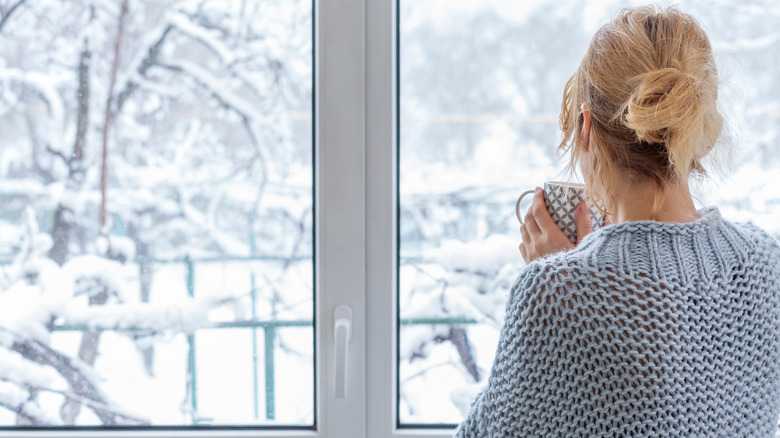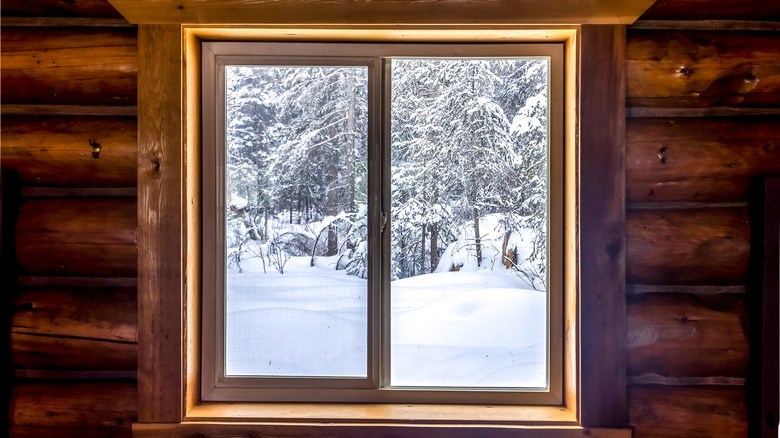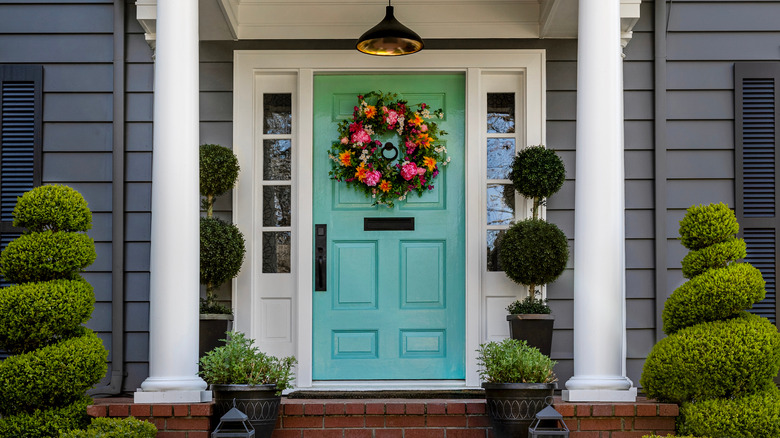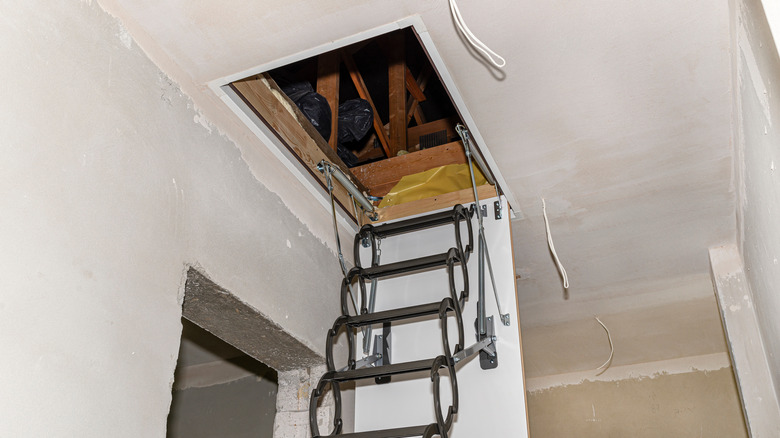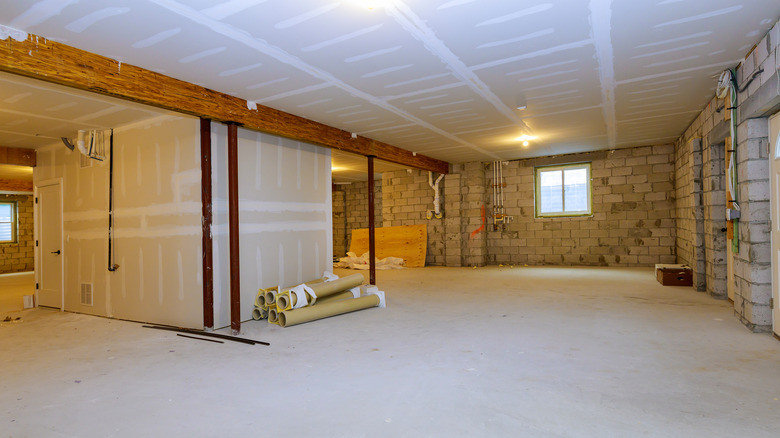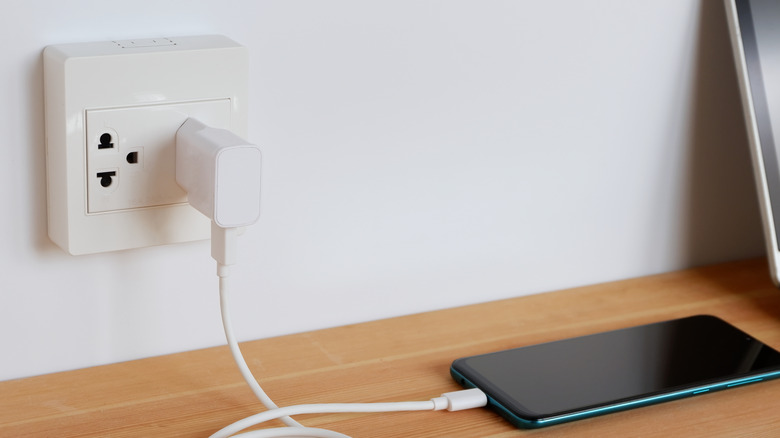5 Places In Your Home That May Be Letting The Cold Air In
As temperatures begin to drop, winter can be sensed on the horizon, and this year homeowners have more reason than ever before to keep cold drafts out of their home. According to CBS News, the cost for electricity and natural gas in 2022 is rising all across the country, meaning heating a home during an icy winter is going to be much more expensive than in years gone by. As such, it might be the perfect time to address all of the pesky areas in your home that could be letting in all that cold air.
Whether it's through your windows, doors, attic, basement, or even the electrical outlets in your living room, there's probably at least one area in your home that's draftier than the rest of the house. Unfortunately, a home that lets in too much cold air puts a greater strain on its HVAC system and is, therefore, less cost-effective to heat. There are many ways homeowners can winterize their home, and thankfully, some of them are quite simple. DIY-savvy homeowners should have no problem keeping the cold air outside where it belongs, however, to do that, you'll first need to discover which areas of your home are allowing cold air to enter.
Windows
Windows are one of the most common sources of cold air entering the home. While some homeowners choose to invest in high-efficiency windows that can keep their monthly energy bill down, replacing all of your home's windows can be a pricey endeavor. Luckily, winterizing a home's windows is a fairly easy task for the average DIYer, and there are plenty of products on the market that can get the job done.
According to Home Depot, different types of windows may require special products for weatherproofing purposes. For this reason, be sure to do your research so you end up purchasing weatherstripping that's tailor-made for your type of window. That being said, the same principle will apply when it's time to get down to business. You'll first need to close any gaps through which air leaks. This is usually accomplished with felt insulation or adhesive strips. You may also choose to invest in products such as thermal curtains or insulating window film. These can further fortify your home's windows against heat loss.
Exterior doors
Homes with drafty exterior doors are so common that it's truly a wonder why more homeowners don't do something to fix the issue. According to Blue Ox Heating and Air, small cracks in a door or doorframe will become larger over time since wood tends to shrink as it gets older. This means if you're not doing anything to address a drafty exterior door, you're actually allowing the problem to worsen year after year. Factor in the increasingly expensive cost of electricity and natural gas, and you have the recipe for an out-of-control heating bill, as well as an HVAC system that's being pushed to the brink.
Thankfully, it probably won't take an expert craftsman to insulate your home's doors. Simply investing in quality weatherstripping and installing it properly should make your entryway much more energy-efficient. It's a cost-effective approach, but it's important to note that your door's weatherstripping won't last forever. According to Pease Doors, most weatherstripping should be replaced every 5 to 10 years, or even more frequently if the door gets lots of use or is situated in an area that is exposed to extreme weather.
Attic
Most homeowners don't venture into their attic with any regularity, so they're often caught off guard when they discover how much cold air the attic is allowing into their home. In fact, according to Dumpsters.com, a vast majority of homeowners have under-insulated attics that can cause close to $200 per year in avoidable heating costs. Additionally, having an under-insulated attic can lead to mildew, ice dams, and wood rot, so winterizing your home's attic is often an investment that is well worth it in the end.
According to the U.S. Department of Energy, you'll want to pay extra close attention to the areas between and over the floor joists when insulating an unfinished attic. You might want to consider insulating your attic with fiberglass as many homeowners find it works wonderfully. You'll also want to address large air leaks around wiring holes, ducts, and anywhere else you may find them. Finally, don't forget to insulate the attic entrance, since this likely represents the largest gap through which air can seep into your home.
Basement
Have you been down in your home's unfinished basement recently? If so, and you nearly caught a cold from standing in the frigid air, it may be a good time to get that taken care of. According to Direct Energy, your basement can account for up to 30% of your home's heating energy expenditures if it's not insulated properly. As such, homeowners who neglect to insulate their basement stand to lose quite a bit of money year over year. As with your home's attic, insulating your basement can provide benefits outside of temperature management because it will also ensure that your basement stays drier than one with subpar insulation. This means less mold, less mildew, and less money wasted on avoidable repairs.
According to Aire Serv Heating and Air Conditioning, insulating the lower level walls is almost always a good idea, not to mention a great way to save money and potentially soundproof this area. However, insulating the basement ceiling can actually make the space cooler since it will prevent warm air from entering. For this type of project, it's smart to consult an expert before determining which insulation method is best for your home.
Places homeowners usually don't think of
Sometimes cold air can enter into your home from spots that, at first glance, seem random. Even if you've expertly insulated every door and window from top to bottom, as well as your basement and attic, there's likely some places where cold drafts are still getting through. For this reason, after winterizing your home, it's a good idea to inspect small cracks that may exist in baseboards, electrical outlets, and even light fixtures, suggests Air Assurance. You can even walk around with an incense stick to see where the smoke is getting pulled into, as this will be a surefire indication of potential leaks.
Of course, there are still other places where cold air may leak into your home. According to the U.S. Department of Energy, you can check your furnace, fireplace chimney, and gas-fired water heater to ensure they are not a source of leakage. One thing to keep in mind is that, for these areas, you'll need to use a fire-resistant insulation method to fill in cracks. Otherwise, regular foam sealant will work great for more general areas around the house.

